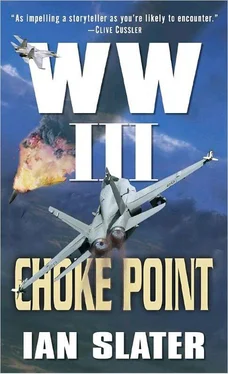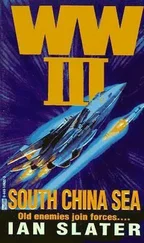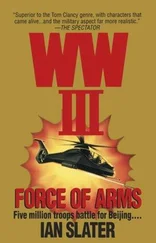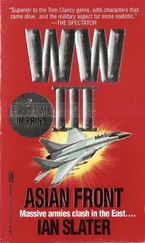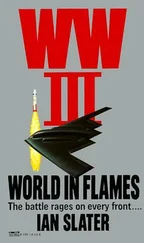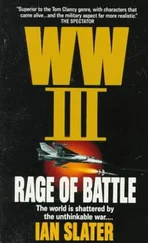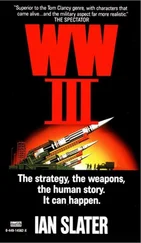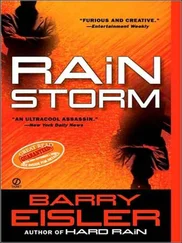All over the island billions of black beetles, known as chun , rose in panicked crescendo as the normally tranquil air, disturbed only in the recent past by loudspeaker propaganda from the Chinese mainland, was now resonant with the noise of gunfire — the chunk of 60mm and 82mm mortars, and the unrelenting thudding of howitzers laying down covering fire and fire for effect, from both ChiCom and ROC forces. The Nationalists, over 25,000, dug in along the entire length of Kinmen’s western and northern shores as ROC armor moved toward Mount Taiwu and adjacent high ground in the island’s mideast sector. Here, a forward battalion of Nanjing’s Armored Division, one of those in the twenty percent of the PLA’s First Class Training Units, now dropped eighteen triple-drogue-chuted mobile howitzers. Each gun was capable of firing flat or high trajectory rounds while on the move at 34 mph, and was also equipped with upgraded infrared night vision and a 7.62mm machine gun.
Initially, the eighteen mobile howitzers caused alarm at Kinmen Nationalist HQ, the ChiCom howitzers unleashing a deadly fire on the line of Nationalist bunkers and trenches at will. Then dots began appearing on Kinmen’s east coast radar screens. They were the ROC’s own fighters, American-made F-18s, screaming westward high above the Taiwan Strait, the 127-mile distance between Taiwan’s Ching Chuan Kang air force base on Taiwan’s central west coast and Kinmen closing fast, the estimated time to enemy contact three minutes.
A swarm of fifty ChiCom Nanchang fighter-bombers and sixty H-6s — ChiCom versions of Russia’s glazed-nosed Tupolev TU-16 medium bombers — were now pounding Kinmen’s defenses with six-hundred-pound cluster bombs, their aerial onslaught met with dozens of ROC surface-to-air missiles. From a distance on the big screens of McCain ’s Tactical Flag Command Center, the contrails of rockets and planes, and bursts of one-in-four red tracer arcing gracefully through the mayhem, looked like a huge and colorful video game. But it was a deadly, no-holds-barred struggle over whether Communist China, with overwhelming if temporary air superiority, would take Kinmen, Taiwan’s first line of defense.
Then the ROC’s F-18s, engines screaming at Mach 1.2, joined battle, coming in from the sun at three o’clock low. They unleashed their air-to-air missiles with such precision and accuracy that the five ChiCom H-6s were hit and downed in the first twenty-two seconds of battle. It sent the entire ChiCom bomber swarms, 253 planes in all, retreating to the mainland’s coastal air space, which, even for the farthest ChiCom bomber and fighter escorts, was mere seconds away, and thick with SAM batteries that till now had remained silent for fear of hitting their own aircraft. Once the bulk of the returning Chinese bombers and escorts crossed the coast, however, the scores of ChiCom surface-to-air missiles opened up, the ROC’s F-18s in hot pursuit, popping orange “sucker” flares. Descending slowly, like fairy dust that belied their serious intent, the flares drew off the ChiComs’ heat-seeking missiles, whose infrared-seeking heads had mistaken the sucker flares’ intensive heat for that of the F-18s’ exhaust.
“They’re running!” announced a young ROC pilot.
“For now,” his wing commander replied. “But for how long?” The ROC air commander, a pilot of long experience, knew that what he was seeing was Mao’s famed hit-and-run guerrilla land tactics being ably applied to aerial combat. And he was aware, as he knew his ChiCom enemies must be, that the overriding problem for the Taiwanese fighters was that they couldn’t loiter as long as the ChiCom planes, which were much closer to their bases, only a few miles away on the Chinese mainland.
When the Taiwanese fighter pilots heard their low fuel alarm and turned back to Taiwan to refuel and rearm, there would have to be other Nationalist squadrons to relieve them, thus stretching their resources in what was quickly becoming a war of attrition. As if to underscore his concern, the Taiwanese wing commander caught sight of a dozen or so smoking plane wrecks scattered around the base of Mount Taiwu. He had no way of knowing whether they were ChiCom or ROC fighters that had risen up from Kinmen’s two southern airfields before the airstrips were cratered, save for one clearly evident “red star” tail, visible in thick green foliage.
Unless hostilities were either called off by Beijing, or some kind of diplomatic cease-fire came into effect under U.S. guarantee, this coastal war situation could quickly escalate to a catastrophic ICBM exchange between Kinmen and Taiwan, the stand-ins, as it were, for Beijing and Taipei. Realizing this, the Taiwanese wing commander knew he must emphasize to Taipei that if Kinmen was not to fall — on one hand a human disaster, an enormous strategic and military defeat on the other — the ROC must keep fighters aloft over Kinmen. To lose this aerial battle would only encourage Beijing to go further.
As thirty Chinese Communist J-11 fighter interceptors — in reality Russian-made Sukhoi-27s — rose from their Fukien airstrip to meet Taiwan’s squadrons of Mirage 2000s, the ChiCom pilots of the PLA air force were confident of victory. The two Lyulka afterburning turbofans on each of their J-11s could deliver more than twice the thrust of the Taiwanese Mirage’s, rocketing the Communist fighters to Mach 2.35 versus the Mirage’s 2.2. Plus the Russian Lyulka engines could take the ChiCom J-11s, with their A-10 Alamo and AA Archer missiles to a service ceiling of 59,000-plus feet, over four thousand feet higher than the Taiwanese Mirage, though both planes’ climb rates were comparable at around 59,000 feet per minute.
When ChiCom ground control alerted their J-11 pilots of a new development — a squadron of Taiwanese F-16s scrambling from Taiwan’s Ching Chuan Kang Air Base — the Communist pilots remained unfazed. The ChiComs’ Sukhoi-27s would still outnumber the Taiwanese challengers by two to one. Indeed, the ChiCom fighter pilots welcomed the news, knowing that their Russian-made aircraft outmatched both the ROC’s Mirage 2000s and their American-made F-16s in both power thrust and service ceiling. Even the highly touted American F-18s, which the Taiwanese were holding back in hard-shell revetments for Taiwan’s last line of defense, were not as fast as the J-11s. And studies at the China-French Friendship Polytechnic at Harbin had shown that the J-11s would defeat the American-made plane more than fifty percent of the time in tight-turning, dogfight engagements.
But as any driver knows, a vehicle is ultimately only as good as its operator, and unlike their mainland enemies, the Taiwanese, because of their buoyant economy, had been able to give their pilots all the air time they could log. They had also been able to purchase the expensive high-tech simulators needed to train a cutting-edge air force; though, in a strange irony, even the best aviators, it was noticed, often became violently airsick in simulators — a condition most of them had never experienced in actual flight. In addition, the best ROC pilots had spent time in the United States by means of a politically hush-hush U.S.-ROC pilot exchange program at Fallon’s top gun school in Nevada. There, high above, and sometimes precariously low, over the Nevada desert, the best Taiwanese pilots from the ROC Air Force Academy flew daily against America’s elite aviators, many of whom had seen active service in both Gulf wars and in Afghanistan. And though relatively few of the Americans there had been in actual dogfights — that is, in one-on-one aerial combat — many had experienced the real-life, gut-wrenching, adrenaline-surging terror of surface-to-air missile attacks as they fought up to nine G’s in the life-or-death drama of evasive maneuvers where they used all the skills taught to them at Fallon.
Читать дальше
